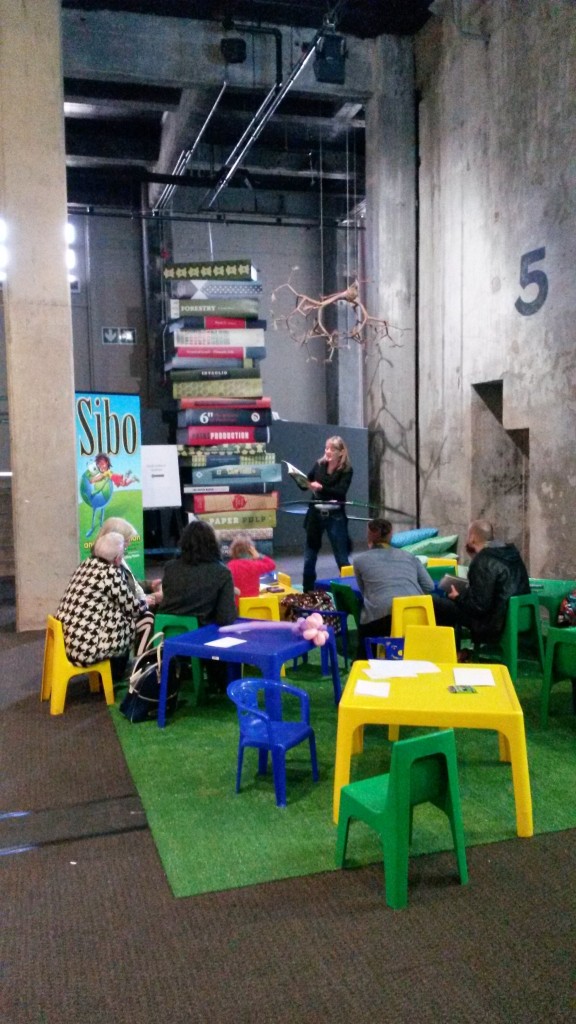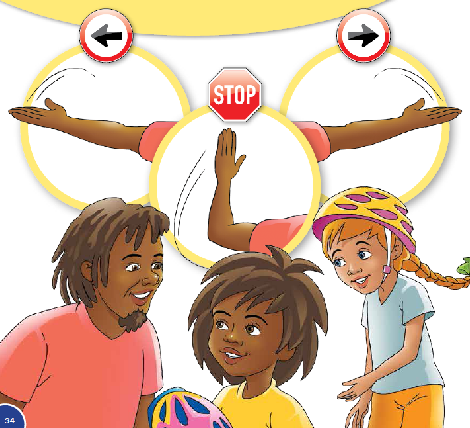
In the case of the Sibo Series there are different scenarios. Several of the titles in the Sibo Series were straight up published by Lets Look Publishers. Okay – that sounds confusing – all of the books have been published by Lets Look – but six of them were published without knowing that we had already sold x amount of copies up front.
A few years ago, it was guaranteed that the school system would snap up any worthwhile books that were published but since CAPS came in, things are not quite the same. A publisher can publish books (usually 3000 is the minimum print run) and they can sit in a store room and trickle out very very slowly. As you can imagine, this is not good for business.
Some of our books have been commissioned. This means that x amount of books are ordered before we even write it on a particular topic. Sibo Fights Malaria was one of those – The Centre for Sustainable Malaria Control and the Department of Health wanted a different way of telling people about what a nasty disease malaria is and how to avoid it. (Ginny knows about this first hand because she had malaria when she was a kid.) So we wrote the book in conjunction with both of them and they are using it in schools in some areas in Limpopo. The good thing about this book is that students from the Education Department at the University of Pretoria are using this book in some of their projects – so we will get feedback as to whether it has any effect or not.
We’ve also written books to celebrate International Years – like Chemistry (funded by BASF, the chemical company). Astronomy and Biodiversity were funded by SAASTA, who also commissioned a book about nanotechnology. That was interesting. We knew nothing about the topic when we started and had to do a lot of research. Strangely enough – it’s one of the most popular books in the series.
Then we get books that are sponsored – or partially sponsored…
Ginny feels strongly about animals being abused and hates the way kids get pets and then only love them when they are small and cute. Once they get bigger and more demanding they tend to be ignored. Pets are for life – not just for the two minutes they are adorable and tiny. Luckily she found a like-minded person who was willing to help sponsor Sibo Saves a Stray. It was very hard to find funding for this book because most people would rather spend their money on the animals themselves, instead of educating kids (and their parents). If you would like more information about the Sibo Series please visit the website.
Our latest title – Sibo Looks Right is all about road safety. This is a topic that is very important to both Peter Sanderson (Lets Look) and Ginny. The first draft of the book was written years ago and at various stages different people showed some interest in sponsoring the book. Sadly none of these prospects paid off and the story mouldered in Ginny’s laptop for way too long. Every time there was a road, taxi or bus accident or incident Ginny would hiss and spit and say that we have to get this knowledge out to the kids (and their parents) somehow. She’d fire off another round of frantic emails to try and drum up some support for the book.
Towards the end of last year, Chris (Ginny’s lovely husband) asked her if she had considered crowdfunding to get the book on road safety published. She didn’t know much about crowdfunding and so got stuck in and did some research. She also sent out a plea on Facebook and Thandi suggested that she try Thundafund as a South African crowdfunding platform.
Ginny is not one of those nice cautious people who likes to sit and brood and stew about things for any length of time. Once she’s got an idea it needs to get out of head immediately and get going. She bounced the idea of crowdfunding off Uncle Pete from Let’s Look and got the go ahead.
Thundafund were great – they replied immediately and sent a form to complete so they could see if the project was going to be worthwhile or not. Typically they would reply within a few days with the answer. Indeed they did reply positively within the allotted time.
There followed another learning curve. Part of a Thundafund campaign includes having a short video on the project. In our case it was not something that you could just go out and film. Ginny had to get cosy with some software she had not used much before and make a little video from scratch.
After all – the whole point of crowdfunding is for potential funders to think the project is worthwhile and not just a little whim of some bankrupt person who fancies doing something with other people’s money!
Ginny showed Chris her first attempt at being a filmmaker. No no no! He screeched before he’d even seen half of it. He ranted and raved for a few minutes about what he expected to see. She considered sulking and pouting – she hates it when he pulls his “Professor” tone on her and treats her like one of his students – but she grudgingly acknowledged that he had a point.
A new and vastly improved video clip was made that passed muster on its first showing.
The campaign went live. We had to reach the tipping point in 90 days otherwise all the money that had been donated would be returned to the backers. Pete, Sharon, Chris and Ginny all promptly plugged cash into the campaign to start it off.
The tipping point was just enough to pay the layout artist and the illustrator. If we got enough money to do this we’d be able to have an e-book at least. Of course first prize was R140,000 so that we could print 3000 books and distribute them freely to kids and schools around the country.
There were various “rewards” that could be purchased. For R500 you could have your child’s name written into the story line. R300 and your logo would be displayed on the inside cover. R100 got your name mentioned. Everybody who donated would obviously receive an e-book as well.
A few days into the campaign – Mike Ward from Nash Nissan in Alberton catapulted the campaign from a “wannabe-book” to a “this-is-now-happening-book” with his very generous donation of R33600! This meant we had passed the tipping point and could sleep again.

The Department of Arts and Culture also decided it was a worthwhile project to back and donated several thousand rand to the campaign as well.
There were lots of lovely friends and acquaintances, not to mention family members who all backed our project. These donations came in from all over the world too! Ginny contacted as many of the car companies as possible – for a measly R300 they could have their logo included in the book. To no avail – they all had some sappy excuse or other. Even Peugeot – and Chris had just bought a brand new car from them.
We also tried repeatedly to get the attention of the major radio stations. This might have made a great difference as far as funding was concerned. It’s not like we were trying to make money out of the project – we wanted to be able to distribute as many books to the children as possible. Road safety is an issue.
Pippa Hudson at Cape Talk interviewed Ginny but by that stage there were only a few hours left to the campaign.
After 90 days we had a grand total of R54,550. Whilst not as much as we hoped for, it was enough to publish an e-book as well as printing 800 copies.
Ginny realised that she had not exactly done her homework prior to starting the Thundafund campaign. Whilst she’s quite good at bombing people on email and Facebook, her tweeting habits left a lot to be desired. This is an integral part of crowdfunding and we sucked at it. It’s something that she is working on to promote the book.
After much haggling and to-ing and fro-ing between, Ginny, Uncle Pete, the layout artist and illustrator – we finally have a product that we are very proud of and are excited to share it with the world.
The files went to the printers this morning and the e-book will be ready in the next few days.
Lets Look Publishers and Ginny are very grateful to all those who helped make this book happen. We hope and trust that it might save some of our precious children’s lives (and those of their parents).
PS – If there is anybody out there who missed this campaign and would like to contribute now – it’s never too late – we can print more books and get them out there – contact Ginny.












